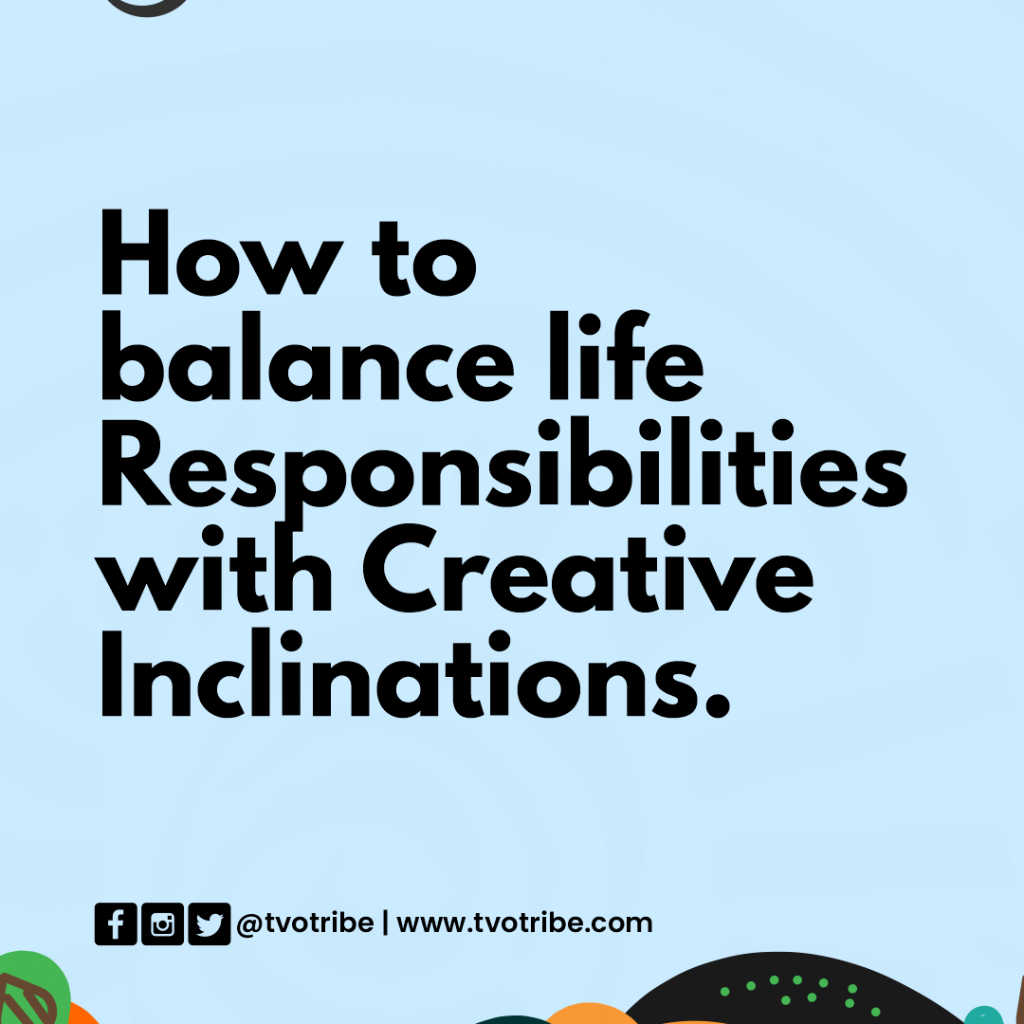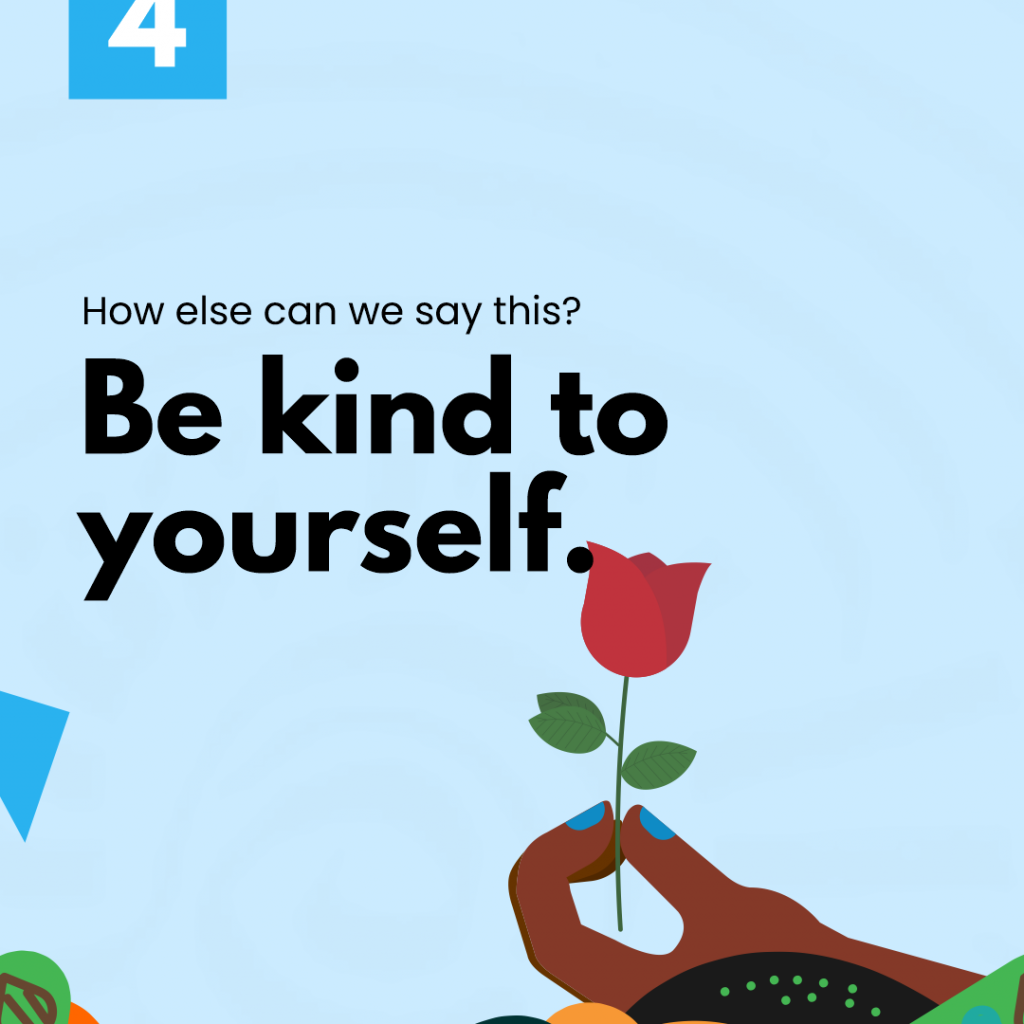Life responsibilities are obligations required for you to live a productive and fulfilled life. For most people, these responsibilities may include taking care of ailing family members, working jobs to earn a living- a 9–5 job or learning a trade in a bid to “have a life.”
For the purpose of this article, the responsibilities of balancing being creative and having a regular job would be explored. Even though it is often agreed that finding any form of balance would always be a lifelong process of learning, relearning and unlearning, there are ways we can ensure more productivity and less burnout as a ‘working creative’.

Daily Job Routines Are Taxing But Your Choices Still Belong To You
“Schedules Are Meant To HELP, Not HINDER. Create Them With YOUR LIFESTYLE In Mind” – Chrissy Halton
Regular 9–5 job routines, whether remote or physical, can get quite taxing. But your job should cater to any of these three: Extra time, extra resources or a skill set that will procure a successful creative endeavour. Either of these will afford you the right to intermittent rests or “I will catch my breath after completing this task” kind of rest.
You should also consider the kind of work you would do that would give you the kind of feelings you want after each day’s work. Be as real as possible about your fulfilment levels.
Being honest about the demands of your job is another way of giving yourself self-care, even about matters as “serious” as work.
Take an inventory of your skills and passions, create a pattern that interests you and group them into categories like things I enjoy doing, things I get paid a lot for doing, skills that should be honed and skills that should remain dormant, etc. Doing this will help you value your skills, recognize how expert you are and find employment that complements you as an individual, and your creativity as well.
Assess the work you’re doing and its effect on your mental health, and if more harm than good is being done, it might be time to dust your curriculum vitae (CV) and start looking for another job that would excite you and complement your creativity.
Saying “No” Confidently Is A Skillset You Must Possess
“…there are often many things we feel we should do that, in fact, we don’t really have to do. Getting to the point where we can tell the difference is a major milestone in the simplification process.” – Elaine st. James.
Learning to say NO to things, even when you want to do them, is an art that is invaluable in ensuring focus and maximum productivity with your creativity. It is important that everyone learns how to keep their art of pleasing people to the barest minimum. You can make people get used to the idea that the chances of your saying no to their invitation are high.
Get comfortable with sacrifice and boundaries. Communicate boundaries clearly. Change “I can’t” to “I don’t”. “I don’t” implies confidence in your routines. It makes it easier to stick to creative routines. For instance, say: “I don’t work past 11 pm, or I do not receive calls before 9 am etc.” Saying “I can’t” suggest that you can be persuaded to change those boundaries or stands.
Tackle your guilt that may want to arise from saying no to people and most importantly your FOMO (Fear Of Missing Out). It’s completely in your right to decide how you choose to spend your time with whomever it is. Remember to set reminders for major things. Saying “yes” is also an option. Say yes to only the things that truly matter to you, and get you excited. Plus, you can’t do everything that comes your way. You have to pick some and overlook some.
Build Healthy Habits
“And once you understand that habits can change, you have the freedom and the responsibility to remake them.” – Charles Duhigg
You may hate your habits: eating habits, sleeping habits and especially, working habits at the moment but you have the liberty to turn them into whatever good you desire.
The important roles daily routines play in the wellness or pitfall of our creativity cannot be overruled. And for each obstacle before you, you can create achievable plans to tackle them. When viewed as a place to start instead of several rules that must be adhered to, creative routines work better.
Good ways to create these habits include:
1. Studying your peak creative hours as a creative.
Every creative can study their peak creative hours and ultimately, identify them. They can pick the hours when distractions are at their lowest and their energy is at its highest to ensure maximum productivity.
2. “Done” is better than “perfect”. Even if all you do is scribble ideas in your journal for creative works, they’d come in handy on days when inspiration is low.
3. Switching your environment. Environments have an impact on the amount and quality of the creative works we do. Just make sure that wherever you are headed, your tools will act as a prompter to spur you into working. Other artists’ spaces can act as your muse per time.
Start small and build slowly. 10 minutes of daily commitment is a good place to build from.
Taking Breaks When You Break Down Isn’t Break, It Is Called Recuperation
“Taking a break can lead to breakthroughs.” – Russell Eric Dobda
You won’t break down when you take a break. There are greater chances of breaking through than breaking down. Downtimes give you a blank slate, while also restoring drive and creativity. If you let it. Learn to sit still without feeling guilty. Allow your mind to be still. Hyperactivity can be a mirage, falsely convincing you that you’re being productive.
Don’t burn out. To avoid burning out psychologically, you need to take frequent breaks for self-reflection. Quit filling each of your quiet moments with noise. You could take a walk, savour a meal without simultaneously thinking of millions of other ‘important’ things you could be doing at that moment, find a quiet place to sit, listen to natural sounds, take deep breaths and try exercise routines. Most importantly, don’t be afraid to take a break. You can’t be productive when your mental health is in shambles.
Be Kind To Yourself
“You will never speak to anyone more than yourself in your head, be kind to yourself.”

Watch what you say to yourself. Never lend your voice to the negativity surrounding you. You have more time than you think. Take care of yourself and allow ‘you’ rest. No one is indispensable. Put your goals into perspective and understand that your various interests could all be explored. However, be realistic about your productivity. Be careful so your goals don’t take ownership of your life. Endeavour to ask yourself the “why” of whatever you’re doing per time.
Be easy on yourself. Be honest to yourself and celebrate your wins with as much excitement as you can muster. Be grateful for the little things in life and be kind to others as much as you can.
Build A Support System
“Everyone needs a support system, be it family, friends, coworkers, therapists, or religious leaders. We cannot do life alone and expect to keep mentally, emotionally, and spiritually healthy. Everyone needs some sort of support system on which to rely.” – Richelle E. Goodrich
Your choice may be to be alone but you should also consider the advantages of being open, honest and vulnerable with others. Learn to let go and move on from failures. Don’t shut out your loved ones in a bid to pursue creativity. After all, life could be cruel and of what use is it to go on living, chasing shadows, without loving?
Allow yourself to love and be loved.
In essence, balancing life responsibilities with creative inclinations is possible if you will take a cue from why it is important, create a healthy routine around it and be grateful for the outcomes.

